Peperomia Ferreyrae (Happy Bean Plant) Care Guide
Written by Iris
Dec 23 2021
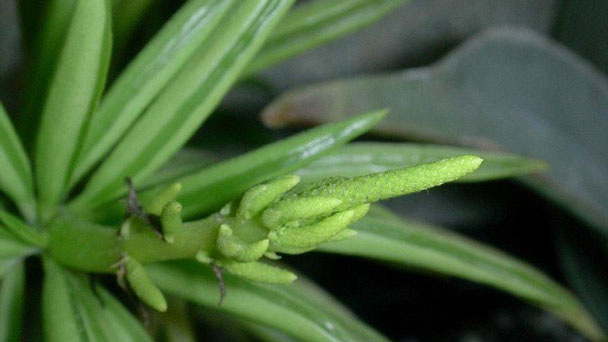
Peperomia Ferreyrae (Happy Bean Plant) is an exotic succulent native to Peru whose leaves are striking. Having bright green, cup-shaped, bean-shaped leaves growing in branches. Provide well-drained soil away from reflecting heat. Once established, it is seldom watered during the hot season. Ideal for warm climate views and container gardens. Peperomia Ferreyrae is a slow-growing but sturdy tropical plant. It works well as a common indoor plant.
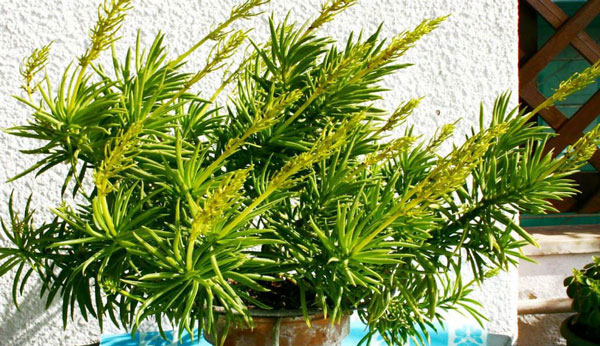
Make sure that your breeding tray and all the equipment you use are clean and ideally sterile, because fungal disease is the biggest problem that can prevent you from successfully spreading Peruvian tumors.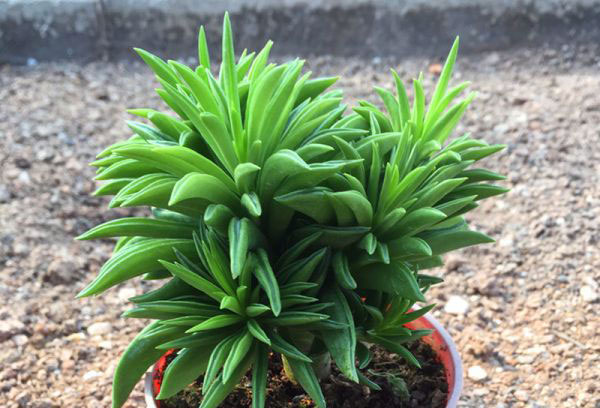
If you already have your regular house potting mixture. A good way to use this method without spending extra money is to add pearlite or sand. Both aim to improve drainage systems.
If you prefer to make your own potted mixture. In a bowl, mix two parts of peat and one part of perlite or sand.
This feature makes caring for the plant easier because you can often miss watering without harming it. Its ability to store moisture allows it to stay dry for longer. However, this also makes it easier to overwater. Because it has some water, give it too much water by watering, it will overwhelm it. The bad part about this is that it can cause a series of problems. The worst case is Peperomia Ferreyrae root rot. Because of this, watering is the most challenging part of taking care of your pillow sleep. Moreover, due to changes in the weather, you need to water more during the hot summer, and the amount of evaporation is greater. On the other hand, winter is colder and plants are not actively growing. Therefore, reducing watering is necessary because the soil takes longer to dry. The most important thing to water your Happy Bean Plants is to avoid overwatering anyway.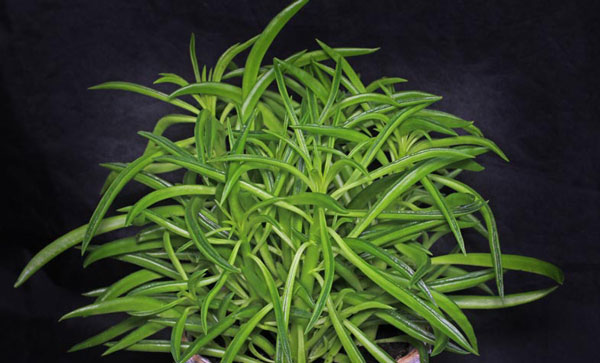
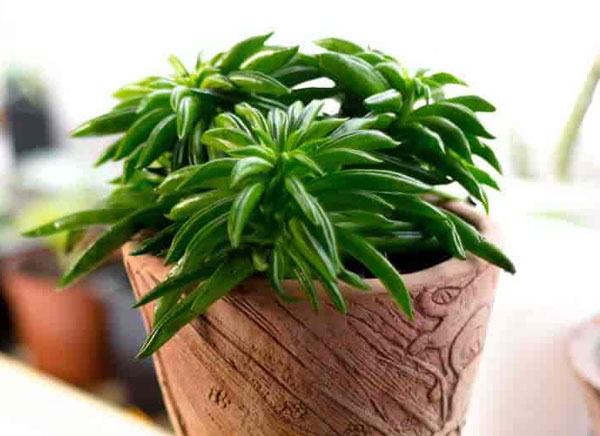
Peperomia verticillata 'Belly Button': An eye-catching varietal with a compact form and tiny leaves, somewhat reminiscent of the baby tears plant
Peperomia metallica var. Colombiana: A dazzling, tri-colored plant with foliage of bronze, silver, and red
Peperomia nitida (cupid peperomia): A varietal that's ideal for hanging baskets plants, complete with heart-shaped leaves edged in cream
Peperomia perciliata: A trailing varietal that has a tight growth habit and produces oval-shaped foliage and red stems
Peperomia caperata 'Suzanne': A unique plant with deeply ridged foliage and silver accents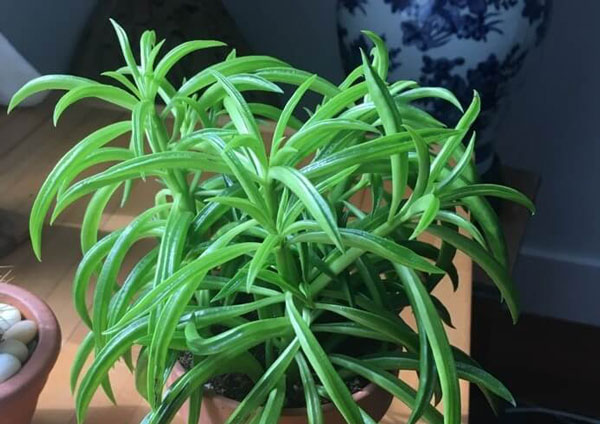
Equally, it's reassuring for those people with small children who can safely place peperomia plants anywhere in their home without wondering whether there is a risk to their children's health.
| Botanical/Scientific Name | Peperomia Ferreyrae |
| Common Name | Happy Bean plant, Happy Bean, Pin Cushion Peperomia |
| Plant Type | String Succulent |
| Light Requirements | Bright, indirect sunlight |
| Soil Care | Loose, well ventilated and well-drained soil |
| Watering | Afraid of overwatering |
| Propagation | Peperomia Ferreyrae can be propagated from stem or leaf cuttings |
| Toxic | Non-toxic to cats and dogs |
How to Grow Peperomia Ferreyrae (Happy Bean Plant)Peperomia Ferreyrae Propagation with Stem CuttingsPeperomia Ferreyrae Propagation with Leaf CuttingsHow to Care for Peperomia Ferreyrae (Happy Bean Plant)Peperomia Ferreyrae Light RequirementsPeperomia Ferreyrae Soil CarePeperomia Ferreyrae WateringPeperomia Ferreyrae Temperature & Humidity CarePeperomia Ferreyrae Fertilizer CarePeperomia Ferreyrae Pruning CarePeperomia Ferreyrae Pests & Diseases CareVarieties of Peperomia PlantsPeperomia Ferreyrae (Happy Bean Plant) FAQAre Peperomia Plants Poisonous?Where should I display my Peperomia Ferreyrae?Are Peperomia Ferreyrae easy to take care of?Is Peperomia Ferreyrae a succulent?
How to Grow Peperomia Ferreyrae (Happy Bean Plant)
Peperomia Ferreyrae Propagation with Stem Cuttings
The ideal situation for propagating Peperomia Ferreyrae is in the spring when new growth will be most dynamic. Here is a step-by-step guide to taking new Peperomia Ferreyrae plants.- Cut a healthy stem from the Peperomia Ferreyrae plant, preferably with three pairs of leaves on it. Use sterile sharp scissors or scissor scissors.
- Remove the bottom leaf so that there is a short section of stem exposed.
- Cut the ends of the dipping sauce into root powder.
- Make a small hole in the potting medium.
- Insert the Peperomia Ferreyrae cutting object and fix the potting soil around the cutting.
- Rinse the potting medium thoroughly.
- Follow the remaining steps to cut the leaves.

Peperomia Ferreyrae Propagation with Leaf Cuttings
Prepare your Peperomia Ferreyrae (Happy Bean Plant) propagation tray or flower pot in advance. Use the same mixture of potted compost and pearlite.Make sure that your breeding tray and all the equipment you use are clean and ideally sterile, because fungal disease is the biggest problem that can prevent you from successfully spreading Peruvian tumors.
- Cut a healthy leaf from happy bean Plant. You can remove this at the bottom of the stem, or have a small stem attached. Use sterile sharp scissors or scissor scissors.
- You can use whole leaves to reproduce.
- Cut the edges of the leaves into root powder. This will encourage the growth of new roots.
- Use a knife or spoon to make a small channel in the potting medium so that you can easily insert 1-2 cm of the cut leaves into the potting mix.
- Insert the cut edge of the leaf into the soil and fix the potting soil around the cut.
- Rinse the potting medium thoroughly.
- Cover cuttings. Either use a covered breeding tray, or you can improvise and use a polyene bag on the top of the pot.
- It grows with bright indirect light at normal room temperature.

How to Care for Peperomia Ferreyrae (Happy Bean Plant)
Peperomia Ferreyrae Light Requirements
Happy Bean Plant will do best in bright, indirect sunlight. For Peperomia Ferreyrae, an east or west facing window is ideal. During the summer months, ensure peperomia ferreyrae don’t get excessive direct sunlight. Too much sunlight can lead to leaf scorching. If you place your Peperomia Ferreyrae somewhere it is getting insufficient light. Peperomia Ferreyrae tends to get long legs as it stretches towards available light. If this happens, you can easily prune it to maintain the compact appearance of the plant. If this happens, be sure to move the plant to a more suitable location.Peperomia Ferreyrae Soil Care
Because of the risk of overwatering, soil becomes more important than just your medium or source of nutrients. It needs to be loose, well ventilated and well drained. The first property will allow enough oxygen (and water) to easily penetrate the soil and reach the roots. The latter ensures that any excess water is easily drained away. So you have a few options to get the soil your Peperomia Ferreyrae needs.If you already have your regular house potting mixture. A good way to use this method without spending extra money is to add pearlite or sand. Both aim to improve drainage systems.
If you prefer to make your own potted mixture. In a bowl, mix two parts of peat and one part of perlite or sand.
Peperomia Ferreyrae Watering
Peperomia Ferreyrae (Happy Bean Plant) is a semi-succulent plant. In other words, it has the characteristics similar to sucking sugar. More specifically, its leaves can store water.This feature makes caring for the plant easier because you can often miss watering without harming it. Its ability to store moisture allows it to stay dry for longer. However, this also makes it easier to overwater. Because it has some water, give it too much water by watering, it will overwhelm it. The bad part about this is that it can cause a series of problems. The worst case is Peperomia Ferreyrae root rot. Because of this, watering is the most challenging part of taking care of your pillow sleep. Moreover, due to changes in the weather, you need to water more during the hot summer, and the amount of evaporation is greater. On the other hand, winter is colder and plants are not actively growing. Therefore, reducing watering is necessary because the soil takes longer to dry. The most important thing to water your Happy Bean Plants is to avoid overwatering anyway.

Peperomia Ferreyrae Temperature & Humidity Care
Peperomia Ferreyrae grows at normal indoor temperatures. Minimum value: 10C (50F). Peperomia Ferreyrae will be great outdoors in the summer shade. Although its juicy leaves would lead you to believe that it can tolerate dry air, Peperomia Ferreyrae has always needed some moist air; Otherwise it might lose its leaves. It may be necessary to use a humidifier during the winter months to maintain the desired humidity level.Peperomia Ferreyrae Fertilizer Care
Speaking of fertilizer, you only need to feed your food when it is actively growing Happy Bean Plant. This is in spring and summer. There is no need to apply fertilizer when the plants are winding and resting during autumn and winter. Use a general-purpose liquid fertilizer diluted to half strength once a month in spring and summer. If you feel that your Peperomia Ferreyrae does not grow so much, you will be more aggressive. The situation is like this, feeding every 2 weeks in spring and once a month in summer. However, avoid over-fertilizing.Peperomia Ferreyrae Pruning Care
There is no need to be too delicate when trimming Peperomia Ferreyrae (Happy Bean Plant). Peperomia Ferreyrae can really tolerate pruning well, so don't hold back. One of the reasons I like Peperomia Ferreyrae is their delicate, compact appearance, so I usually trim them back quite aggressively to maintain their decorative appearance.
In addition to cosmetic purposes, you should also take this opportunity to remove any dead growths and leaves that show signs of damage or disease. Detecting unhealthy leaves early, removing it, and preventing the problem from recurring are important ways to keep plants healthy.
Peperomia Ferreyrae Pests & Diseases Care
Peperomia Ferreyrae (Happy Bean Plant) are generally resilient to pests and diseases. Peperomia Ferreyrae are easy to care for and maintain because their low pruning and repotting requirements. Make sure Peperomia Ferreyrae gets the proper care because a healthy plant will less likely to be attacked and infested by pests. On the other hand, disease are another potential problem. However, you can completely avoid such problems. The main problem is water, more specifically, moisture is often the root cause of many of the disease issues that can hound the happy bean plant plant. Followings are significant to pay attention to:- Avoid overwatering
- Watch out for cold weather. The colder the climate, the longer Peperomia Ferreyrae takes soil to dry.
- Keep the Peperomia Ferreyrae plant away from cold drafts, including vents, air conditioners and open windows or doors
- Peperomia Ferreyrae prefers high humidity and this preference makes it more prone to water problems which can lead to issues like root rot, leaf spot and fungal infections.

Varieties of Peperomia Plants
There are hundreds of different varieties of peperomia plants, many of which make exceptional houseplants. Some of the most popular varietals include:Peperomia verticillata 'Belly Button': An eye-catching varietal with a compact form and tiny leaves, somewhat reminiscent of the baby tears plant
Peperomia metallica var. Colombiana: A dazzling, tri-colored plant with foliage of bronze, silver, and red
Peperomia nitida (cupid peperomia): A varietal that's ideal for hanging baskets plants, complete with heart-shaped leaves edged in cream
Peperomia perciliata: A trailing varietal that has a tight growth habit and produces oval-shaped foliage and red stems
Peperomia caperata 'Suzanne': A unique plant with deeply ridged foliage and silver accents

Peperomia Ferreyrae (Happy Bean Plant) FAQ
Are Peperomia Plants Poisonous?
Thankfully peperomia plants are entirely safe for humans and pets. There is no danger to your pets from contact or ingestion. Whilst I'm sure they don't taste very nice, you needn't worry if your pet takes a liking to having the odd nibble of a leaf here and there.Equally, it's reassuring for those people with small children who can safely place peperomia plants anywhere in their home without wondering whether there is a risk to their children's health.
Where should I display my Peperomia Ferreyrae?
Since these Peperomia Ferreyrae are small and don't take up a lot of space they are a great plant to sit on top of your desk or on a shelf. Make sure you don’t place this plant on top of a radiator and try to keep it away from drafts.Are Peperomia Ferreyrae easy to take care of?
Yes these Peperomia Ferreyrae are easy to take care of and are relatively low effort due to the fact that they don't need to be watered as often as other plants, they also don't require high levels of humidity so you can sit your plant somewhere and it will do relatively well.Is Peperomia Ferreyrae a succulent?
The Peperomia Ferreyrae (Happy Bean Plant) is what you would refer to as a semi succulent plant. It's not quite 100% there but most of its care requirements are very similar to that of other succulents.Latest Updated
- Benefits of Bugleweed - 7 Science-backed Health Benefits
- Bugleweed Dangers & Side Effects - Is It Poisonous?
- How to Plant Evergreen Trees - What You Should Know
- When to Plant Evergreens - Grow Guide for Evergreen Trees
- 12 Wonderful Evergreen Shrubs for Your Garden
- 12 Popular Evergreen Plants with Pictures for Beginners
- When And How To Prune A Lilac Bush Like a Pro
- How to Grow & Care for Lilac Vine (Hardenbergia Violacea)
- Japanese Lilac Tree (Syringa Reticulata) Care & Propagation Guide
- Shumard Oak Pros and Cons - What to Know
Popular Articles
- Winter maintenance of Antirrhinum Majus
- How to Grow Terminalia Mantaly Tree
- How to Grow and Care for Crossostephium Chinense
- How to grow Antirrhinum Majus in spring
- Peristeria Elata (Dove Orchid) Profile: Info & Care Guide
- Underwatered Snake Plant (Sansevieria Trifasciata) - Signs And How To Fix
- How to Care for Brazilian Jasmine Plant (Mandevilla Sanderi)
- How to Grow & Care for Graptopetalum Purple Delight in Summer
- Rosa Chinensis (China Rose): Plant Growing & Care Tips
- How to Care for Baby Sun Rose (Aptenia Cordifolia)